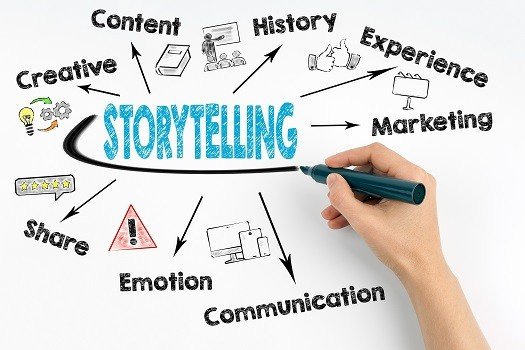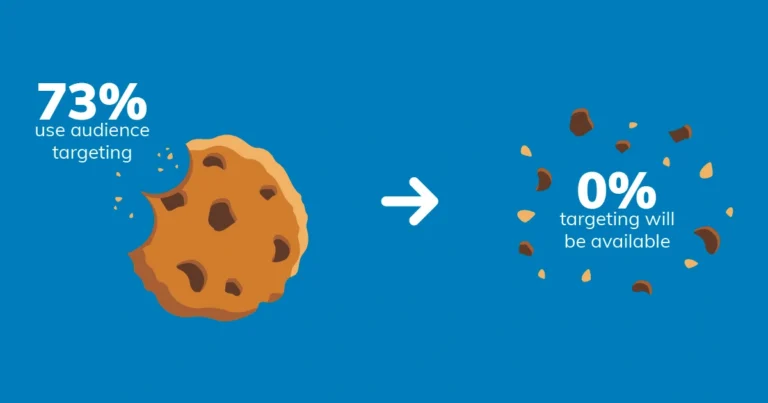The Art of Storytelling Business: Proven Tips and Techniques
Curious about using storytelling in business? This article explains how storytelling can differentiate your brand, connect emotionally with customers, and boost engagement in your storytelling business. Discover key strategies to implement effective storytelling in your business.
Key Takeaways
Storytelling is a vital tool for businesses to create emotional connections and enhance customer loyalty, making brands relatable and memorable.
Effective storytelling requires key elements like a clear structure, compelling characters, conflict, and a strong message that resonates with the audience.
Types of impactful stories include origin stories, customer success stories, and behind-the-scenes narratives, each serving to demonstrate your brand’s values and engage different audience segments.
The Importance of Storytelling in Business

Storytelling is not just an age-old tradition; it’s a powerful communication skills tool that businesses can harness to connect with various stakeholders. When words are woven into stories, they become more than just information—they become experiences. Effective storytelling builds emotional connections, allowing businesses to create memorable experiences that resonate deeply with customers. In a world flooded with marketing messages, a compelling story can set your brand apart and make it unforgettable.
Moreover, storytelling highlights the unique values of a brand, differentiating it in a fiercely competitive market. Sharing stories that reflect your brand’s journey, mission, and vision enhances customer engagement and fosters loyalty. When customers perceive a brand as relatable and approachable, the relationship transcends mere transactions, evolving into a lasting bond. This relatability makes your brand more than just a logo—it becomes a trusted companion in your customers’ lives.
Let’s not forget the role of storytelling in decision making. A great story can influence customers’ choices by demonstrating how your products or services can solve their problems or enhance their lives. Emotionally connected customers are more likely to take action and choose your brand over others. In essence, storytelling isn’t just about telling tales; it’s about creating a compelling narrative that inspires trust, loyalty, and action.
Key Components of a Good Storytelling Business
Crafting a compelling story involves specific elements that make it engaging and memorable. At the heart of every compelling narrative is a hero—a character that represents the customer and their struggles. This hero becomes the focal point of the story, allowing the audience to see themselves in the narrative.
A clear structure is crucial for effective storytelling. A compelling story follows a clear beginning, middle, and end, building tension and keeping the audience engaged. Good storytelling includes details about the time and location that provide context and make the story more immersive. Relatable main characters further enhance engagement, allowing the audience to connect on a personal level.
Conflict is also essential. The presence of a villain—a challenge, competitor, or market obstacle—creates tension and captivates the audience. Depicting the main character’s decisions and actions to overcome challenges adds depth to the narrative.

Revealing the outcome and tying together all narrative elements ensures a satisfying and impactful ending. Ultimately, every good business story should convey a clear purpose or message that resonates beyond the immediate characters and solutions.
Types of Business Stories You Should Tell

In the world of business storytelling, not all stories are created equal. Some narratives are particularly effective in engaging audiences and conveying your brand’s message. Origin stories, customer success stories, and behind-the-scenes stories are three types that can significantly enhance engagement by connecting with different audience segments and demonstrating your brand’s values.
Origin Stories
Origin stories showcase the humble beginnings and motivations of a company’s founders. They often explain the problem the company aims to solve and the inspiration behind its creation. Take, for example, the founders of a company stuck in Paris without a ride—this scenario might birth a revolutionary ride-sharing service.
Consider the story of SoulCycle. It began with two women searching for a fulfilling cardio routine. Their quest led to the creation of unique indoor cycling studios that emphasize community and personal connections. This narrative not only explains the origin of the company but also highlights its values and mission, creating a strong emotional reaction among its audience.
GoPro’s origin story is another great example. Instead of overtly marketing their product, they shared an emotional story of a firefighter saving a kitten, recorded on a GoPro camera. This story illustrates the impact of their product in real-life situations, making it relatable and compelling. Such origin stories create a sense of shared values and inspire the audience.
Customer Success Stories
Customer success stories highlight real-life examples of overcoming challenges using a company’s products or services. These customer stories build trust and relatability, showing existing customers and potential customers how they can benefit from what you offer.
One effective type of customer success story is the Improving Experiences narrative. This type emphasizes listening to customer feedback, adapting to their needs, and continually improving customer satisfaction. Actions in such stories might include seeking feedback, solving problems, employee training, tech upgrades, and revamped policies.
Emotional and sensory language in these great stories creates a deeper connection with the audience.
Behind-the-Scenes Stories
Behind-the-scenes stories provide a glimpse into a company’s culture and operations, humanizing the brand and fostering a deeper connection with the audience. These stories reveal the inner workings and values of a company, enhancing engagement and loyalty.
Lush’s ‘How It’s Made’ series is a perfect example of effective behind-the-scenes storytelling. Emphasizing transparency, ethical practices, and craftsmanship, Lush engages customers and builds trust. These narratives are not just about technical details; they are compelling stories that connect on a human level and showcase the brand’s commitment to quality and integrity.
Effective Storytelling Strategies for Businesses

Effective storytelling in business is about more than just entertaining your audience; it’s about achieving specific objectives such as engaging, inspiring, and provoking action. Understanding your audience, using an authentic voice, and leveraging multimedia formats can elevate your storytelling efforts.
Know Your Audience
Understanding your target audience’s pain points and interests is crucial for effective storytelling. When you know what your audience cares about, you can craft stories that resonate with them on a deeper level.
A compelling business story hinges on a deep understanding of your audience’s needs and priorities. Focusing on these aspects captures the audience’s attention and makes your narrative more relatable and impactful.
Use Authentic Voice
Authenticity in storytelling captivates audiences and fosters genuine connections. Behind-the-scenes stories, for instance, reveal the inner workings of a brand, enhancing trust and interest.
Aligning storytelling with company values ensures that narratives resonate with customers on a meaningful level. Stories featuring real people become more relatable and authentic, making the brand more human and trustworthy.
Leverage Multimedia Formats
Visual and interactive content, such as videos and infographics, enhance engagement by simplifying complex information. Short-form videos are particularly effective for social media storytelling, capturing attention quickly and conveying messages succinctly.
Interactive content, like quizzes or decision-making tools, invites participation, enhancing audience engagement with the story. Multimedia storytelling simplifies complex themes, allowing audiences to visualize solutions and grasp concepts swiftly.
How to Start Implementing Storytelling in Your Business

Start implementing storytelling by asking employees, managers, founders, and customers for writing stories they want to tell or hear. This collaborative approach ensures that the stories are relevant and resonate with your business audience.
Emphasize a key takeaway or lesson in each story to make it relevant and impactful. Storytelling can also enhance team collaboration by aligning members around a shared narrative and vision. Share stories that are engaging and informative, as they can also significantly boost brand awareness.
Real-Life Examples of Successful Business Storytelling

Deliciously Ella exemplifies successful business storytelling. Starting as a recipe website, it evolved into a wellness app and published cookbooks, reflecting the brand’s journey and growth. By sharing personal health struggles, the founder created a narrative that resonates with many and builds a loyal following.
Lush Cosmetics uses its ‘How It’s Made’ video series to engage customers through authentic storytelling, emphasizing the brand’s values and ethical practices.
Stories highlighting a company’s adaptability and growth mindset, like those of NetSuite, show how businesses can thrive by meeting customer needs and navigating challenges.
Measuring the Impact of Your Storytelling Efforts

Tracking metrics such as brand awareness, engagement, and conversions is crucial for assessing storytelling effectiveness. Comparing your performance against industry benchmarks can help evaluate success and inform necessary adjustments.
Tools like Google Analytics and social media analytics provide insights into how storytelling affects audience interaction. Sentiment analysis helps gauge the impact of storytelling on audience perception by monitoring emotional responses.
Measuring storytelling ROI validates its contribution to business objectives and secures budget support for future initiatives.
Summary
In conclusion, storytelling is a powerful tool that can transform your business by creating emotional connections, enhancing customer relationships, and differentiating your brand. By understanding the key components of a good story, knowing your audience, using an authentic voice, and leveraging multimedia formats, you can craft compelling narratives that resonate with your audience. Start implementing these strategies today and watch your brand’s story come to life.
Frequently Asked Questions
Disclosure: Our blog contains affiliate links to products. We may receive a commission for purchases made through these links. However, this does not impact our reviews and comparisons. We try our best to keep things fair and balanced, in order to help you make the best choice for you.






